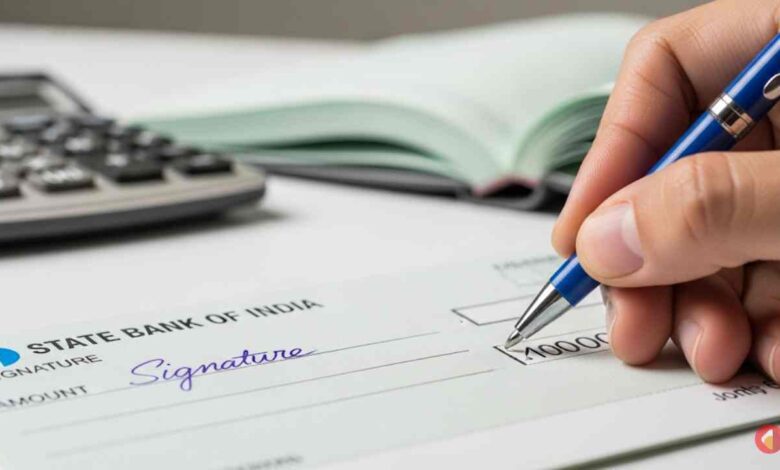Bank Cheque Writing: 10 Things to Keep in Mind to Avoid Major Risks!

Bank Cheque Writing: Even in today’s era of digital payments, the importance of cheques has not diminished. Whether for business or personal transactions, many people still rely on cheques. But did you know that a small mistake while writing a cheque can lead to big trouble? All your money could disappear from your account. So, in today’s post, we will discuss the 10 essential things you must keep in mind while writing a cheque to protect yourself from any financial fraud.
10 Things to Always Remember When Writing a Cheque:
1. Be Careful with the Date
There is a specific space for the date on the top right corner of the cheque. Always write the correct date. Remember, a cheque is typically valid for three months from the date of issue. After three months, it becomes a ‘Stale Cheque,’ and the bank will not accept it. Therefore, double-check the month and year when writing the date.
2. Write the Payee’s Name Correctly
Write the full name of the person you are issuing the cheque to on the ‘Pay’ or ‘Pay to’ line. Ensure there are no spelling mistakes. If you are issuing a cheque to a company, write their full and correct name. Do not leave extra space before or after the name, as malicious individuals could misuse that blank space.
3. Write the Amount Accurately in Words and Figures
You need to write the amount in two places on the cheque – once in figures and once in words. The amount must be identical in both places. If there is a discrepancy between the amount written in words and figures, the bank will cancel your cheque. After writing the amount in words, be sure to add the word ‘Only’. For example – ‘Ten Thousand Rupees Only’.
Get Instant News Updates!
Join on Telegram4. Verify Everything Before Signing
Your signature is the most crucial part of the cheque. Before signing, ensure all the information on the cheque is filled out correctly. Use the exact signature that is registered with your bank. If there is any mismatch in the signature, the bank may reject the cheque. Never sign a blank cheque.
5. Use ‘A/C Payee’ Cheque
By drawing two parallel lines on the top left corner of the cheque and writing ‘A/C Payee’ between them, the money can only be deposited into the payee’s bank account. This prevents cash withdrawal and makes the cheque much more secure. Always try to use an ‘A/C Payee’ cheque.
6. Avoid Cutting or Overwriting on the Cheque
If you make a mistake while writing a cheque, do not cut or overwrite on it. Banks usually do not accept such cheques. If you make a mistake, it is better to cancel the cheque and write a new one. Write ‘VOID’ or ‘CANCELLED’ in large letters across the cancelled cheque.
7. Use Permanent Ink
Always use a blue or black ink ballpoint pen to write a cheque. Do not use any other color ink or a pencil, as they can be easily erased or altered.
8. Keep a Record of the Cheque
Your cheque book has a record slip at the beginning. Note down the cheque number, date, payee’s name, and amount for every cheque you issue. This will help you easily find the cheque details if any issues arise in the future.
9. Be Aware of Post-Dated Cheques
Issuing a cheque with a future date is known as a post-dated cheque. If you give someone a post-dated cheque, ensure you have sufficient balance in your account on that date. The bank will not honor the cheque before the specified date.
10. Keep Your Cheque Book Secure
Your cheque book is a very important document. Always keep it in a safe place. If your cheque book is lost, inform your bank immediately and, if necessary, issue a ‘Stop Payment’ instruction.
Even in the digital age, the use of cheques is undeniable. By following these rules, you can protect yourself from financial loss and ensure your transactions are secure and smooth.

